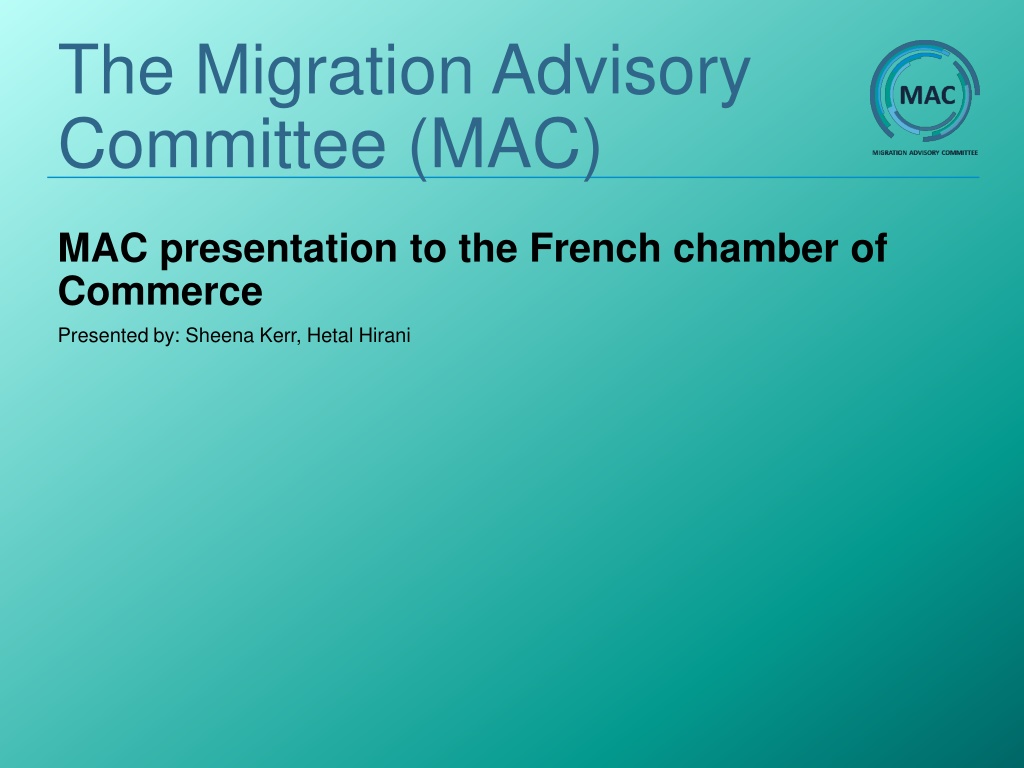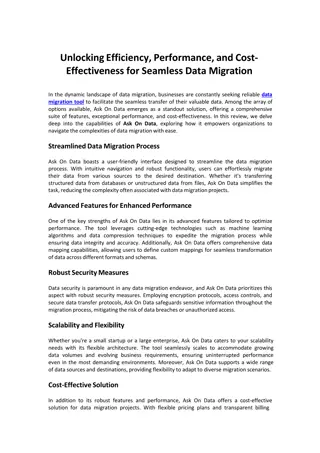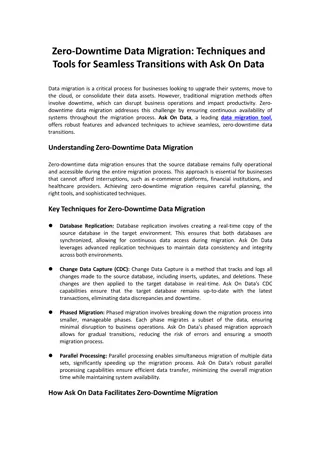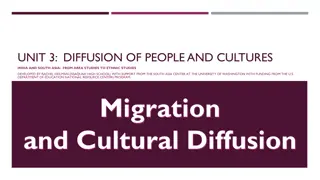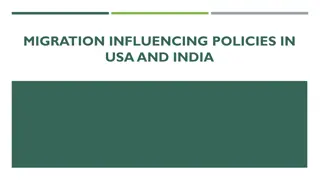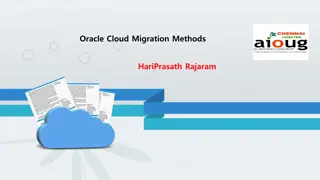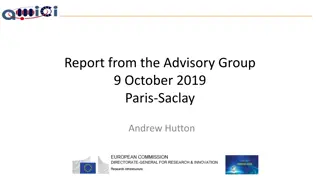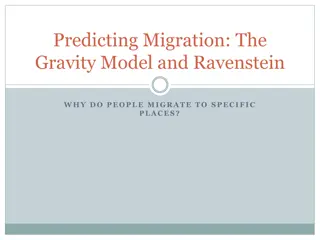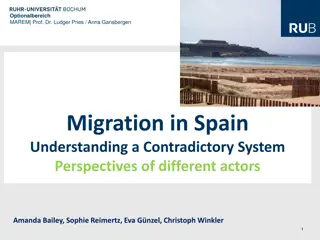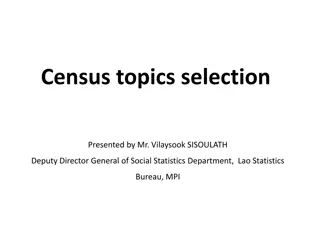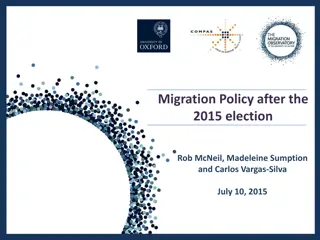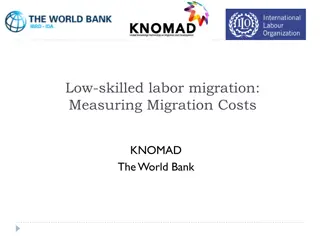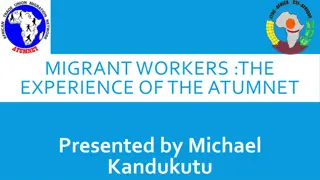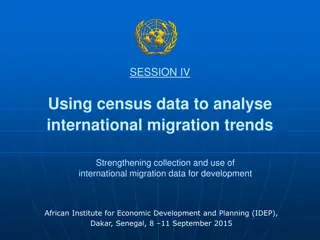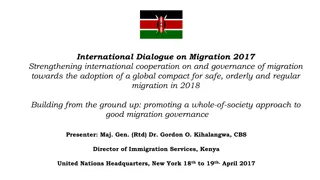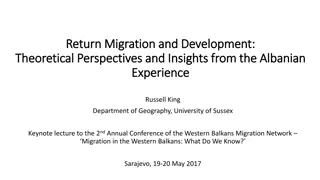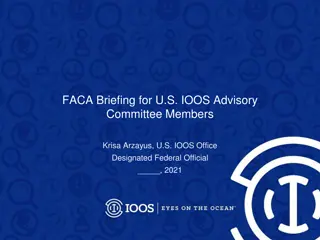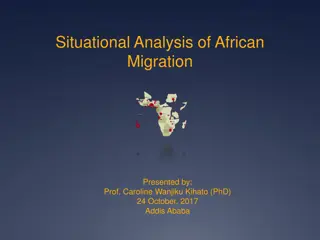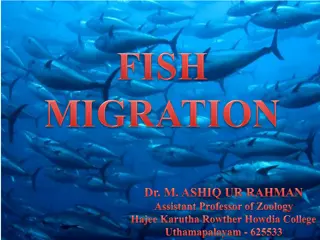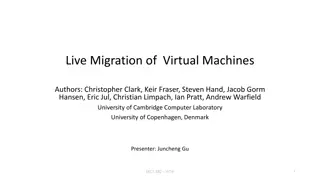The Migration Advisory Committee Review and Findings
The Migration Advisory Committee (MAC) is an independent advisory body formed in 2007 to provide recommendations to the government on migration issues. The MAC does not create or implement policy but advises through research and analysis in various areas like economics, education, and stakeholder engagement. Recent findings include a review of the ICT route, impacts of EU exit on the labor market, and insights on the pandemic's effects on immigration. The MAC aims to build an evidence-based approach for efficient migration policies.
Download Presentation

Please find below an Image/Link to download the presentation.
The content on the website is provided AS IS for your information and personal use only. It may not be sold, licensed, or shared on other websites without obtaining consent from the author. Download presentation by click this link. If you encounter any issues during the download, it is possible that the publisher has removed the file from their server.
E N D
Presentation Transcript
The Migration Advisory Committee (MAC) MAC presentation to the French chamber of Commerce Presented by: Sheena Kerr, Hetal Hirani
Introduction to the MAC Formed in 2007: an independent, non-statutory, non-time limited, non- departmental public body that advises the government on migration issues. Why do we exist? Which means 1. We make recommendations Provide 2. We do not create policy 3. We do not implement policy Enable Inform Allow
Introduction to the MAC Who are we? What do we do? 1. Ministerial Commissions 2. Committee Led Research Committee Secretariat How do we do it? Economics Education Research & Evaluation Stakeholder Engagement Economics & Data Devolved Administrations 1. Call for evidence 2. Expert Panels 3. Quantitative Analysis 4. Qualitative research and analysis Social & Political Science Migration Framework Document
Commissions Commissioned by HO Ministers Limited resource Other government departments cannot directly commission MAC led Work Since 2019 the MAC can also conduct its own work outside of commissions AR 2020/2021 Building the evidence base: Data matching, progression of migrants, employer attitudes
ICT Route Commissioned September 2020, published October 2021 Main findings: Route working well Salary thresholds should be reviewed and update annually ICT should be a route to settlement (not accepted) New rules around subsidiaries to replace the Representative of an Overseas Business route: up to 5 team members, no more than 2 year visa period, after which switching be allowed A secondment route should be created to allow overseas businesses under contract with a UK business to second staff to the UK
Annual Report 2021 The Pandemic Labour Market and the new Immigration System Asylum and Integration Immigration and Social Care Costs of the Immigration System Indeed Data Exploration Forward Look
Impact of EU exit on the labour market 9% 30% 7% Share of workers in RQF 1-2 jobs who are EEA migrants they are slightly overrepresented in these roles. Share of workers in food manufacturing and warehousing who are EEA migrants these sectors may be most affected by the new immigration system The share of the UK workforce who are EEA migrants The COVID-19 pandemic and going forward EEA migrants were not restricted to certain occupations prior to the EU exit, and could migrate to work in RQF 1-2 jobs, but since this most can only arrive in the UK to work in skilled occupations (RQF 3 and above) or via other specific immigration routes. Because the ending of freedom of movement occurred during the COVID-19 pandemic, the effects of each are difficult to distinguish from one another. During the pandemic, labour shortages in some RQF 1-2 roles such as HGV drivers led to the introduction of bespoke short term visa schemes for EU workers. More substantial changes in the proportions of EEA workers may be expected going forward, as the effects of the pandemic wane but the impact of a decreasing flow of EEA nationals into the UK is observed.
Qualitative research with employers Semi-structured interviews with 28 employers in 3 sectors (construction, IT, manufacturing) Aim to understand how they experienced and responded to shortage How migration fits into the response to skill/personnel shortage Key findings Migrants are driving their own recruitment: as recruitment moves online they can apply more easily in existing recruitment rounds The use of social networks to recruit can embed migrant recruitment Immigration fees considered in context against the overall value/impact of the hire Combination of COVID and ending of Freedom of Movement has been a major shock; COVID has been difficult short-term but has also created opportunities whereas the impacts of Brexit may be experienced later Continuing shortage leaves a vacuum for potentially illegal recruitment practices Employers are trying to broaden recruitment pool, upskill and retain their staff: skills pipeline important in all sectors Sometimes hard to get uptake for progression/upskilling below RQF6 LINK: Skills shortages and employers of migrant workers - GOV.UK (www.gov.uk)
Annual Report 2021 Labour Market Context Visas issued by reason, 2011-2019 No. of EU migrants estimated to be living in the UK by place of birth, 2004 2021 (millions) Population of those born in all EU 28 countries living in the UK increased to a peak in 2017 and has fallen each year since. Significant uncertainty due to data sources and COVID-19 Census should fil the data gap The primary reason for non-EEA citizens pre- pandemic and under the previous immigration system migrating to the UK was for study purposes. EEA citizens will now need a visa to migrate to the UK and work in certain occupations where previously they could work in any job.
Annual Report 2021 Labour Market Context SWR Applications by Government Office Region, 2021 Economic inactivity rate & unemployment rate The highest share of SW applications in 2021 are in London. This may be reflective of the occupation skill mix London has a higher share of RQF 6+ occupations. The salary threshold is relatively cheaper for London based companies, where wages tend to be higher. Unemployment rose in 2020 after a sustained fall, coinciding with the pandemic, but the most recent data report that it is almost back to pre-2020 levels. High economic inactivity rates suggesting that some individuals have chosen to leave the labour force throughout the pandemic.
The Shortage Occupation List (SOL) The MAC recommends occupations for the SOL Stakeholder evidence and data are collected to inform the recommendation Expecting a commission from the HO to review which occupations are included on the SOL Judgement Criteria: Skilled Sensible Recommendation Shortage
SOL Analysis A Call for Evidence (CfE) Questionnaire Aim Supporting guidance Research Sampled qualitative research to understand why and how sectors use the SOL Indicators Reviewing our methodology Labour Market Statistics: Vacancy, Wage rates Dashboard alongside CfE
